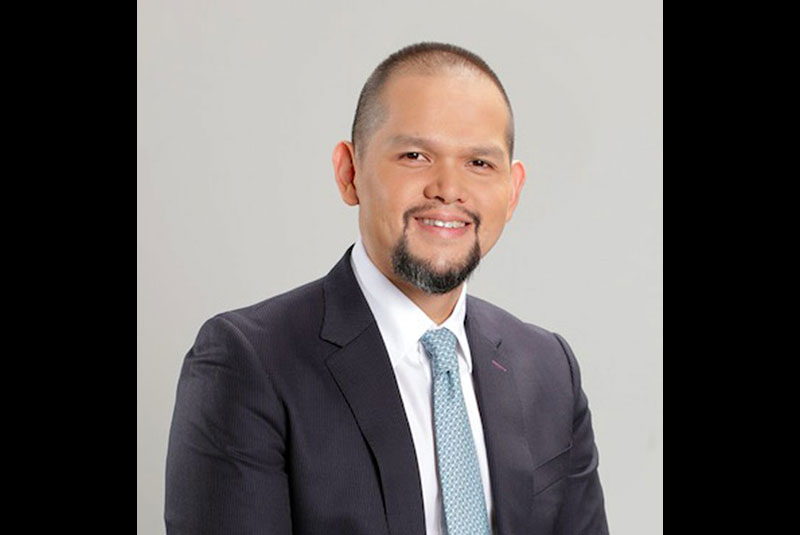John Paul Ang: His own man

Ang
MANILA, Philippines - John Paul Ang, the eldest son of tycoon Ramon Ang, speaks a lot like his father and has the same down-to-earth demeanor, one that easily connects them to people from all walks of life.
At first glance, the younger Ang seems to be a splitting image of RSA — as the elder Ang is known — but a closer look shows he actually looks very different. And it’s not just the beard.
But it’s not just the physical attributes that differentiate father and son.
Paul is his own man. While he could just follow in the footsteps of his father, who has led San Miguel Corp. (SMC) in its ambitious and successful diversification, Paul chose to make his own story.
At 37, Paul is the president and CEO of Eagle Cement Corp., the soon-to-list cement company.
While he got the inspiration from his father who also had his own cement business in the past, Ang built Eagle Cement from scratch.
When he was in high school, he saw the cement business was not doing very well. Prices were down. There was an Asian financial crisis but his father, who ran companies that rehabilitated cement plants, bought Fortune Cement and eventually listed it in the stock market.
It was a bold move, but RSA was armed with guts and lots of hard work.
Paul saw how this changed the fortunes of the family.
“It was then that I realized, the cement business could be a good business,” he said.
He eventually convinced his father to acquire a distressed Malaysian cement company, Sarawak Clinker Bhd, which Paul was able to turn around.
Paul worked in Malaysia from 2002 to 2007, learning the cement business like the back of his hand. He learned the tricks of the trade — and not just the perfect cement mix, but also how to negotiate loans and how to grow the business.
With the experience he gained from Malaysia, Paul has gained invaluable knowledge on the business and can talk passionately about every aspect of running a cement company.
When he was able to turn the company around, it became attractive to buyers.
Eventually, he decided to sell, using the profit to put up a new cement business in the Philippines.
Eagle Cement was incorporated in 1995 but there was nothing yet.
“We had to start from scratch,” he said.
And the rest, as they say is history.
Now, the company’s manufacturing plant in San Ildefonso, Bulacan is a sprawling facility across a 200 hectare property.
It is set to commission a third production line to bring its cement production capacity to 7.1 million metric tons annually from 5.1 million metric tons at present.
With an investment of roughly P7 billion for the third line, the company is set to commission the line in 2018. The third line would also boost ECC’s clinker capacity to 4.2 million metric tons from 2.8 million at present. Clinker is the basic raw material for cement.
The plant is equipped with state-of-the-art modern technologies and is able to house and handle all stages of cement production from limestone quarrying, clinker production, additives mixing, and market distribution.
It is currently composed of two production lines that produce 5.1 million metric tons of cement every year, or 130 million bags per annum.
At present, Eagle Cement is the largest 100 percent Filipino-owned cement player in the country. It also has the newest cement plant compared to its peers, translating to operational efficiency and higher margins.
The company is presently the fourth largest player in the market in terms of sales volume, with footprint in high-economic activity areas such as NCR and Region 3.
Compared to competitors’ plants which have been in operation for more than 20 years, Eagle Cement’s seven-year facility is backed by modern, top-class equipment, including the country’s single largest cement mill for its Line 2 operations.
The new equipment allows for lower power consumption compared to conventional mills. The company also employs a waste recovery system, which supplies a portion of the total power requirements of the plant. Both contribute to more environment-friendly and sustainable operations, with minimum dust emissions and less dependence on the power grid.
Furthermore, Eagle Cement’s plant has contributed to the company’s continuous growth since kicking off operations in 2010, from P7.1 billion revenue in that year to P13.3 billion in 2016.
Moreover, it has helped the company achieve an EBITDA of P2.77 million in 2013 to P6.33 million in 2016 with margins at 47.5 percent.
The company is set to list on the local bourse on May 29. At a price of P15 per share, the company plans to sell 500 million common shares by way of primary offer with an over-allotment option of up to 75 million secondary shares.
Proceeds of P8.62 billion would be used to partially finance the company’s planned Cebu plant, which will house its fourth production line. The plant is expected to help establish Eagle’s foothold in the Visayas and Mindanao.
The plant is set for completion in 2020.
With Paul passionately flapping the company’s wings, Eagle will indeed make it to that next big leap.
- Latest
- Trending

























